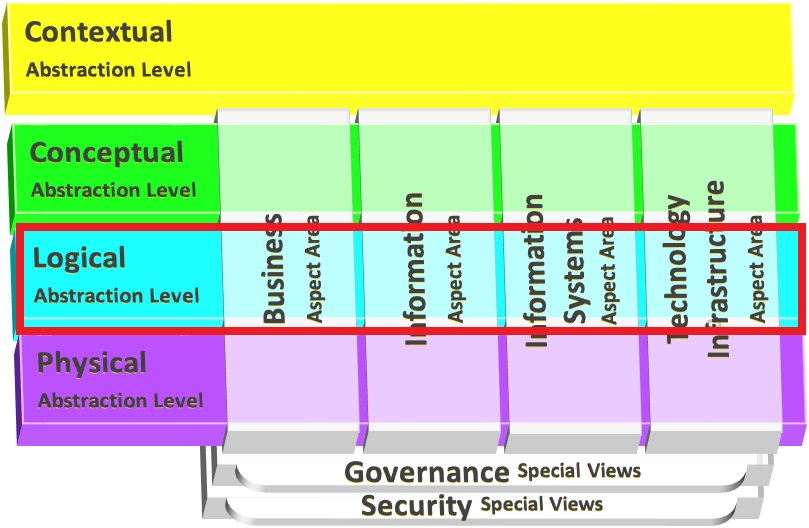Logical Abstraction Level
The Logical Level is characterised by the “HOW” statement – how can the architecture be structured and
organised in an optimal fashion to achieve the stated objectives? The Logical Level is about setting
the desired architecture state and structure in an implementation independent manner. The desired end
state for the architecture may be short- or long- term or a combination of both. Several “Logical
Solution Alternatives” are typically developed that reflect different or conflicting constraints,
priorities, principles or business objectives for the architecture. For example, a ‘low cost’
alternative may be considered against a ‘customer first’ (i.e. feature rich) one. These different
alternatives may only affect portions of the architecture or they may have ramifications across the
entire architecture. The outcome of the Logical Abstraction Level is an agreed “desired state to be
achieved” representation of the architecture that is implementation dependent. This typically is a
compromise between different “Logical Solution Alternatives” described previously. The Logical
Abstraction Level therefore is the level where major decisions are made. This is where IAF can be used
as decision support for optimal solutions, looking for the impact of change or even identifying
opportunities simply by looking at different alternatives. This is where for example IAF could have a
strong role to play as a tool for an organisation’s enterprise architecture function.
|

|